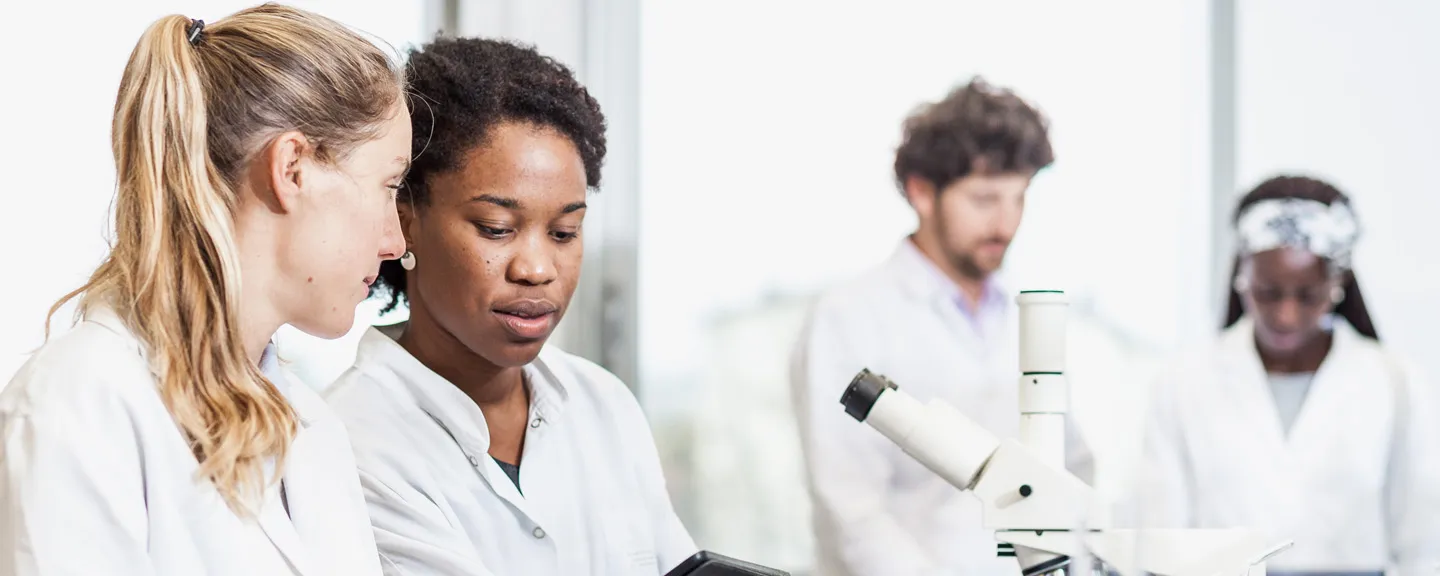- Home
- >
- APU Articles
- >
- News Article
Innovative Learning Assistant Program Provides Peer Support to Increase Student Success
July 26, 2022 | Written By Nathan Foster

Learning assistants are undergraduate students who aim to increase student engagement and success in the classroom. These students have completed the same class within the past year or two. “A peer, who just recently took the class, can often help unlock challenging concepts for students in an accessible way,” said McCoy, chair of the Department of Mathematics, Physics, and Statistics.
Learning assistants are different from teaching assistants (TAs) and tutors. TA’s will often teach different sections of the class and help grade papers and tests; their primary aim is to assist the teacher. Learning assistants' top goal is to assist the learner, to figure out where students are struggling and help address these issues. Their role is also different from a tutor. Instead of students carving time out of their schedule for one-on-one help, learning assistants are right there to provide aid during class, removing barriers.
Kate Tickle, a senior math and honors humanities major, served as a learning assistant in a Math 130 course. “I had lots of tutoring experience in high school and college, but I thought this presented a unique opportunity,” Tickle said. “I was able to identify gaps in understanding during class among the students and I helped fill those gaps and address misconceptions.”
The President’s Scholarship Enhancement Grant enabled the team to hire a total of 24 learning assistants during the 2021-22 school year, 8 in the fall and 16 in the spring. This used a little more than half of the grant award, allowing the rest to be rolled over into the 2022-23 school year, to fund more learning assistants. Last year’s learning assistants served in chemistry, biology, math, physics, writing, and computer science classes.
“We chose to deploy learning assistants primarily in introductory classes because those are gateways to their respective majors and students have traditionally struggled more in those courses, impacting retention rates for those majors,” McCoy said. “All faculty expressed the belief that the program was useful for student success.”
McCoy conducted a survey to assess the impact learning assistants had on failure rates. For the courses that reported failing grades and estimates of likely failing grades, if a learning assistant was not present, the failure rate decreased from an estimate of 18.2 percent to 10.7 percent. In terms of tangible numbers, this meant that across 14 classes with a total enrollment of 307 students, only 33 students earned failing grades while 56 were projected to fail had they not had a learning assistant. “That’s 7.5 percent more students who passed who otherwise would not have,” McCoy said. “That’s significant.”
Roth, an assistant professor in the Department of Biology and Chemistry, benefitted from having learning assistants in his General Chemistry I class during the fall and spring semesters. “These are complicated topics that may be unfamiliar to students, but most of the time, I wouldn’t see students asking a lot of questions,” Roth said. “My learning assistants would determine what caused confusion for the students and ask important questions. They would also chime in with questions they heard in small groups that some students felt too intimidated to ask in front of the whole class.” One of Roth’s learning assistants would connect the content to real world situations she learned about in her upper level courses while the other would come up with bell ringers, simple questions to address complex issues from the previous lecture.
Perhaps the most significant part of the learning assistants’ job is to create a welcoming atmosphere within the classroom and to recognize which students struggle and need more attention. Erika Litson, a senior chemistry and honors humanities major and one of Roth’s learning assistants, focused on this aspect. “I’d usually get to class a few minutes early. During that time before class started, I’d get to talk to students the most,” Litson said. “They knew who I was and would come up to me and ask questions about homework, materials, and labs. We’d also just chat about our days, what’s going on in their lives.”
As students worked on practice problems during class, Litson would walk around and check their work while pushing them to go a bit further. “It was really great to see students who were struggling with problems have something click inside their head, an aha moment, and solve it,” Litson said. “I want to teach chemistry someday and moments like that really cemented that desire.” Litson and Tickle said serving as a learning assistant felt like a mentorship for their future careers. “It was important for me to learn how to feel confident in sharing my knowledge of the material,” Tickle said. “As a future teacher, I’m really grateful for that experience.”
Roth said that with the positive feedback from students, faculty, and the learning assistants themselves, the program provides a model that could extend its impact.“I believe faculty and students alike could benefit from this program across APU.”